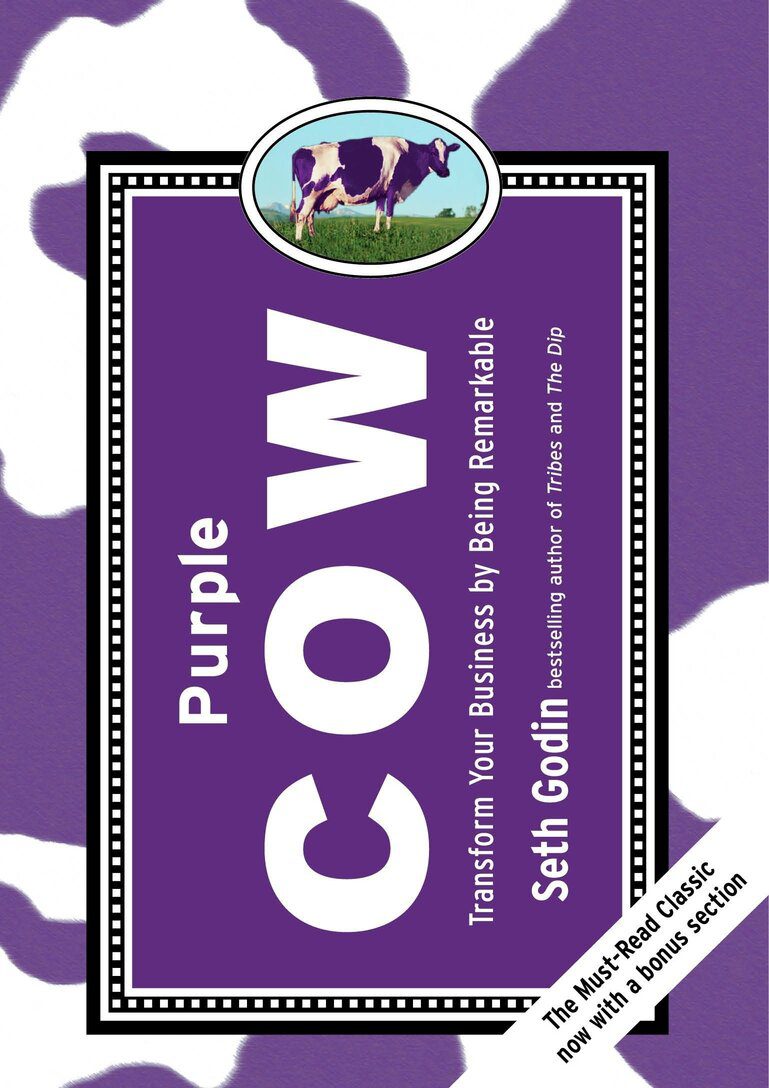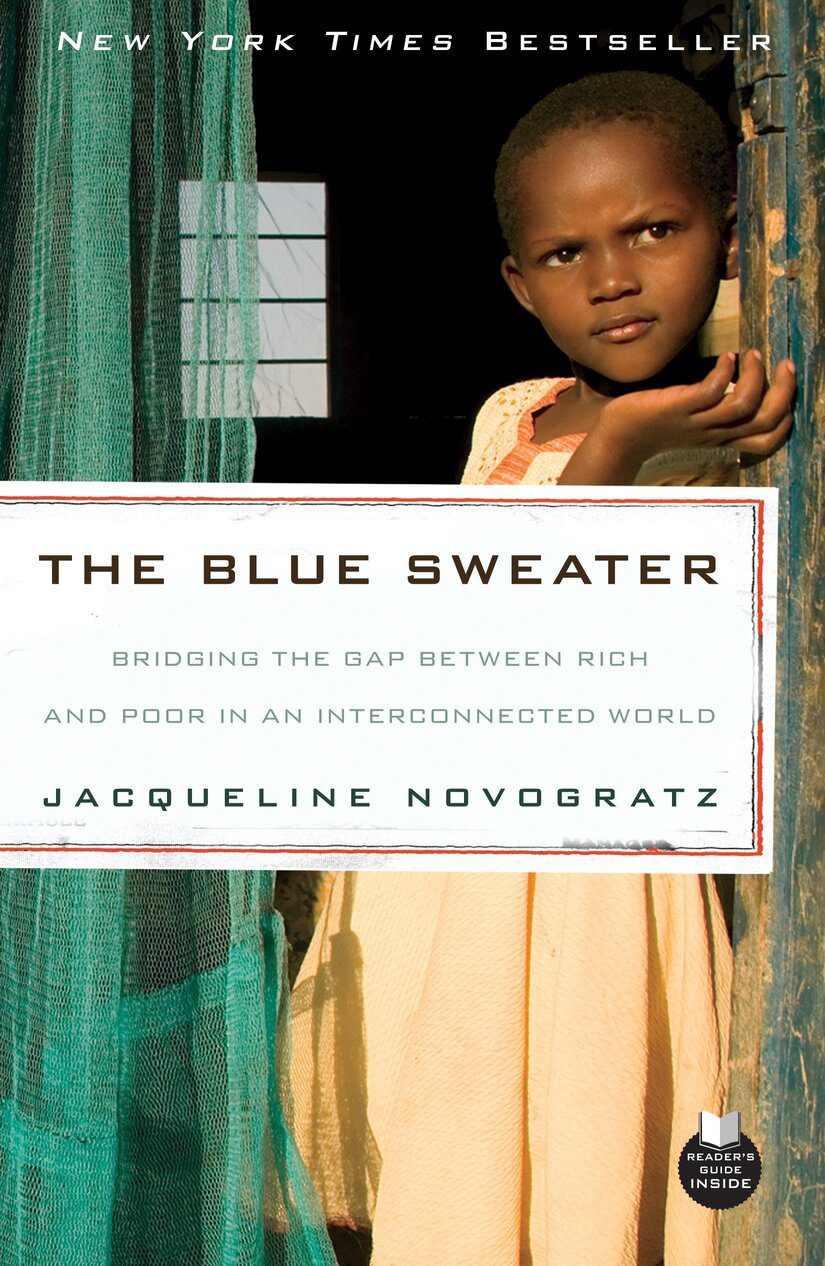In a crowded marketplace, fitting in is failing. In a busy marketplace, not standing out is the same as being invisible.
Print | Kindle(eBook) | Audiobook
Purple Cow by Seth Godin is one of my favorite business marketing books, the key concept in the book is very simple: to convert people to become raving fans in our fast-paced world, you need to create something remarkable worth talking about.
Cows, after you’ve seen one, or two, or ten, are boring. A Purple Cow, though…now that would be something. Purple Cow describes something phenomenal, something counterintuitive and exciting and flat out unbelievable. Every day, consumers come face to face with a lot of boring stuff-a lot of brown cows – but you can bet they won’t forget a Purple Cow. And it’s not a marketing function that you can slap on to your product or service. Purple Cow is inherent. It’s built right in, or it’s not there. Period.
Here are my favourite takeaways from reading,Purple Cow by Seth Godin:
Fear
- We’ve been raised with a false belief: We mistakenly believe that criticism leads to failure. From the time we get to school, we’re taught that being noticed is almost always bad. It gets us sent to the principal’s office, not to Harvard.
“Nobody says, “Yeah, I’d like to set myself up for some serious criticism!” And yet … the only way to be remarkable is to do just that.”
You are not your project
- We often respond to our aversion to criticism by hiding, avoiding the negative feedback, and thus (ironically) guaranteeing that we won’t succeed! If the only way to cut through is to be remarkable, and the only way to avoid criticism is to be boring and safe, well, that’s quite a choice, isn’t it?
- You do not equal the project. Criticism of the project is not criticism of you. The fact that we need to be reminded of this points to how unprepared we are for the era of the Cow. It’s people who have projects that are never criticized who ultimately fail.
Don’t be Boring
- You can’t know if your Purple Cow is guaranteed to work. You can’t know if it’s remarkable enough or too risky. That’s the point. It’s the very unpredictability of the outcome that makes it work.
- The lesson is simple—boring always leads to failure.1 Boring is always the most risky strategy. Smart businesspeople realize this, and they work to minimize (but not eliminate) the risk from the process. They know that sometimes it’s not going to work, but they accept the fact that that’s okay.
Doing nothing is not as good as doing something (great). But marketing just to keep busy is worse than nothing at all.
- The more intransigent your market, the more crowded the marketplace, the busier your customers, the more you need the Purple Cow. Half-measures will fail. Overhauling the product with dramatic improvements in things the right customers care about, on the other hand, can have a huge payoff.
- Remarkable isn’t always about changing the biggest machine in your factory. It can be the way you answer the phone, launch a new brand, or price a revision to your software. Getting in the habit of doing the “unsafe” thing every time you have the opportunity is the best way to learn to project—you get practice at seeing what’s working and what’s not.
Idea Viruses
- It’s not an accident that some products catch on and some don’t. When an ideavirus occurs, it’s often because all the viral pieces work together. How smooth and easy is it to spread your idea? How often will people sneeze it to their friends? How tightly knit is the group you’re targeting—do they talk much? Do they believe each other? How reputable are the people most likely to promote your idea? How persistent is it—is it a fad that has to spread fast before it dies, or will the idea have legs (and thus you can invest in spreading it over time)?
- Put all of your new product developments through this analysis, and you’ll discover which ones are most likely to catch on. Those are the products and ideas worth launching.
Not All Customers Are the Same
- Differentiate your customers. Find the group that’s most profitable. Find the group that’s most likely to sneeze. Figure out how to develop /advertise/reward either group. Ignore the rest. Your ads (and your products!) shouldn’t cater to the masses. Your ads (and products) should cater to the customers you’d choose if you could choose your customers.
Safe is risky.
- What tactics does your firm use that involve following the leader? What if you abandoned them and did something very different instead? If you acknowledge that you’ll never catch up by being the same, make a list of ways you can catch up by being different.
Don’t try to make a product for everybody, because that is a product for nobody. The everybody products are all taken.
Change can be hard
- The vast majority of consumers are happy. Stuck. Sold on what they’ve got. They’re not looking for a replacement, and they don’t like adapting to anything new. You don’t have the power to force them to. The only chance you have is to sell to people who like change, who like new stuff, who are actively looking for what it is you sell. Then you hope that the idea spreads, moving from the early adopters to the rest of the curve.
- After the early adopters embrace what you’re selling, they are the ones who will sell it to the early majority—not you.
The Opposite of “Remarkable” is very good.
- Ideas that are remarkable are much more likely to spread than ideas that aren’t. Yet so few brave people make remarkable stuff. Why? I think it’s because they think that the opposite of “remarkable” is “bad” or “mediocre” or “poorly done.” Thus, if they make something very good, they confuse it with being virus-worthy. Yet this is not a discussion about quality at all.
The Parody Paradox
- If you can show up in a parody, it means you’ve got something unique, something worth poking fun at. It means there’s a Purple Cow at work. The paradox is this: The same word of mouth that can make your product a huge hit can also lead to someone’s snickering at you.
- Most companies are so afraid of offending or appearing ridiculous that they steer far away from any path that might lead them to this result. They make boring products because they don’t want to be interesting. When a committee gets involved, each well-meaning participant sands off the rough edges, speaking up for how their constituency might not like the product. The result is something boring and safe.
Trust the Process
- Go for the edges. Challenge yourself and your team to describe what those edges are (not that you’d actually go there), and then test which edge is most likely to deliver the marketing and financial results you seek.
- By reviewing every other P—your pricing, your packaging, and so forth—you sketch out where your edges are… and where your competition is. Without understanding this landscape, you can’t go to the next step and figure out which innovation you can support.
“It’s not the tactics or the plan that joins the Purple Cow products together. It’s the process organizations use to discover (intentionally or accidentally) the fringes that make their products remarkable.”
- In almost every market, the boring slot is filled. The product designed to appeal to the largest possible audience already exists, and displacing it is awfully difficult. Difficult because the very innocuousness of the market-leading product is its greatest asset. How can you market yourself as “more bland than the leading brand”?
The real growth comes with products that annoy, offend, don’t appeal, are too expensive, too cheap, too heavy, too complicated, too simple—too something.
The Purple Cow Checklist
- Explore the limits. What if you’re the cheapest, the fastest, the slowest, the hottest, the coldest, the easiest, the most efficient, the loudest, the most hated, the copycat, the outsider, the hardest, the oldest, the newest, the . . . most! If there’s a limit, you should (must) test it
- Is your product more boring than salt? Unlikely. So come up with a list of ten ways to change the product (not the hype) to make it appeal to a sliver of your audience.
- Think small. One vestige of the TV-INDUSTRIAL complex is a need to think mass
- If it doesn’t appeal to everyone, the thinking goes, it’s not worth it. No longer. Think of the smallest conceivable market, and describe a product that overwhelms it with its remark-ability. Go from there.
- Outsource. If the factory is giving you a hard time about jazzing up the product, go elsewhere. There are plenty of job shops that would be delighted to take on your product.
- After it works, the factory will probably be happy to take the product back.
- Build and use a permission asset. Once you have the ability to talk directly to your most loyal customers, it gets much easier to develop and sell amazing things. Without the filters of advertising, wholesalers, and retailers, you can create products that are far more remarkable.
- Copy. Not from your industry, but from any other industry. Find an industry more dull than yours, discover who’s remarkable (it won’t take long), and do what they did.
- Go one more. Or two more. Identify a competitor who’s generally regarded as at the edges, and outdo them. Whatever they’re known for, do that thing even more. Even better, and even safer, do the opposite of what they’re doing.
- Find things that are “just not done” in your industry, and do them. JetBlue almost instituted a dress code for passengers. They’re still playing with the idea of giving a free airline ticket to the best-dressed person on the plane. A plastic surgeon could offer gift certificates. A book publisher could put a book on sale.
All the Best in your quest to get better. Don’t Settle: Live with Passion.



1 Comment
Pingback: 100 Books Reading Challenge 2020 – Lanre Dahunsi